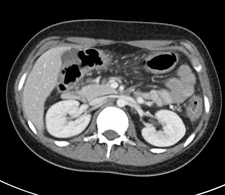What is radiation?
 Radiation is simply energy traveling in the form of waves. Radiation is not always bad – in fact, it’s everywhere. We encounter radiation every time we are exposed to sunlight or sound waves.
Radiation is simply energy traveling in the form of waves. Radiation is not always bad – in fact, it’s everywhere. We encounter radiation every time we are exposed to sunlight or sound waves.
There are two types of radiation:
- Non-ionizing radiation (such as visible light or radio waves) do not hurt you even when used to form medical images.
- Ionizing radiation (such as X-rays) is often useful but can be harmful to the human body in large doses.
Some imaging tests use ionizing, or medical, radiation. Tests that use radiation include X-rays, computerized tomography (CT) scans, and radionuclide (nuclear medicine) studies.
How much radiation is used in these exams?
We are all exposed to small amounts of radiation daily from soil, rocks, building materials, air, water and sunlight. This type of radiation is called natural background radiation.
Radiation from a single chest X-ray is equivalent to the amount of natural background radiation you receive in one day. Radiation from a head CT can be up to 200 times that amount, and an abdominal CT has even higher levels of exposure.
Radiation doses are measured in units called millisievert (mSv). The average amount of natural background radiation a person’s body accumulates in a year is 3 mSv. Below is a comparison of radiation exposure from various sources:
| Natural background radiation: | 3 mSv per year |
| Traveling on an airplane: | 0.04 mSv per round trip |
| Chest X-ray (2 views): | up to 0.1 mSv |
| CT scan of head: | up to 2 mSv |










